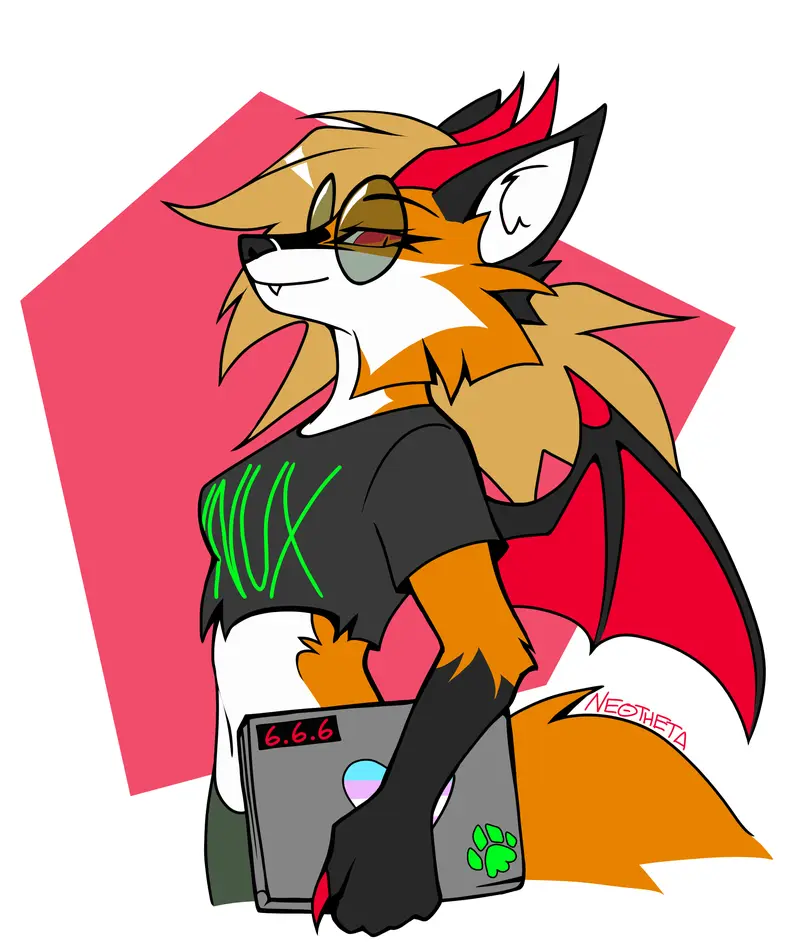Ding Ding Ding
It comes down to this, the heavyweight desktop championship between two powers in the Linux world.
In the blue corner, we have the mighty KDE, KDE comes with a wealth of customization options and good features with every update. It serves a nice alternative to windows 10 or 11s desktop and itself as an OS.
KDE has got so good that even legendary distro, Fedora, wishes to use it in its dealings.
In the grey/black corner, we have GNOME, This is a heavy distro with some ram usage, but it strives to be a simple desktop for usage and has had some good features every new version it comes packaged in as well.
GNOME has had a long history much like KDE, But controversial changes from its older brother.
However… big name distros like Ubuntu have used it across millions of machines in different sectors.
What desktop do you favour and why? Explain your thoughts.
Round 2… GO!
Ding
KDE - Its got people behind it who actually give a flying fuck about their end users.
Love gnome with dash to panel. Zero complaints.
I’m pretty biased since I have been using KDE for a few years and only switched to Gnome this week to properly try it out so maybe I’ll change my mind but I doubt I will.
IMO KDE has better theming and is more uniform across a wider variety of apps. It has support for community themes out of the box and it feels like the components are modular so you can have a different colour title bar compared to the app window etc
- Dolphin > Nautilus
- Kate > Gedit
- Konsole > Terminal
These are the 3 main default apps I use on both DEs. Dolphin has way more customisability and looks better but Nautilus has a fantastic multi-file rename with the option for find and replace built in.
For me, Kate is like the vlc of documents. It will open anything and everything whereas I’ve had a couple of “could not open” errors from gedit this week. I also prefer Kate to Vscode.
Konsole by default switches tabs with ctrl tab but Terminal doesn’t and thats basically my only issue with it.
Gnome seems to still require you to install a browser extension to use Shell Extensions.
KDE widgets are fantastic, I love having system monitors in a hidden panel at the top of my screen so I can really easily check system resource usage. I haven’t found anything similar on Gnome yet.
KDE Connect is such a brilliant app, it wouldn’t launch for me on Gnome but there is GSConnect for Gnome but its a 3rd party app
By default on KDE, if you shake your mouse the cursor gets bigger and there doesn’t seem to be a size limit which is so fun to do lol
Going from Plasma 5 to 6 was a nightmare for me but its probably because I was using EndeavourOS so the updates were sooner and more frequent.
Overall I think Gnome looks and feels a bit outdated and clunky and KDE looks and feels more modern with better integration across apps but that might just be QT vs GTK
I do plan on continuing to use Gnome for at least another 2 months to give it a fair try but I will almost always recommended KDE because I prefer the look and feel
Gnome seems to still require you to install a browser extension to use Shell Extensions.
You can download the Extension Manager from Flathub. You don’t have to use a browser to install extensions at all.
KDE widgets are fantastic, I love having system monitors in a hidden panel at the top of my screen so I can really easily check system resource usage. I haven’t found anything similar on Gnome yet.
There are extensions for that in Gnome. I would mention “Vitals” or “Astra Monitor” if you want to go overkill.
Konsole by default switches tabs with ctrl tab but Terminal doesn’t and thats basically my only issue with it.
Default Gnome terminal is bad. Even Fedora which is a distro that ships almost every DE without any changes switched from the default Gnome terminal to Ptyxis. Ptyxis is probably still not enough for power users, but at least it has more settings including the ability edit keyboard shortcuts and looks better.
By default on KDE, if you shake your mouse the cursor gets bigger and there doesn’t seem to be a size limit which is so fun to do lol
There’s also an extension for that in Gnome although it probably does not have this funny “feature”.
Thank you! I’ve been hesitant to install a whole bunch of extensions but vitals and astra monitor look great, I’m going to try them out this week and see which I prefer.
I’ve been avoiding flathub, it just doesn’t seem like my cup of tea but I may have to reconsider and take a proper look at it because it sounds better than a browser extension ngl
I was just so surprised that a terminal that supports tabs doesn’t have generic tab switching, at least I know I’m not crazy now for not enjoying Gnome terminal lol
I promise the giant cursor is a useful feature even though so many people have thought it was a weird bug lol I constantly do it when I’m trying to figure out how to word an email and on the very rare occasion where I can’t find my cursor it has actually been helful!
Damn this thread really makes me feel like a minority, but I prefer GNOME! It comes useful out of the box, sane defaults, easy to extend without ripping out the soul of how it functions. Best of all it has a new and interesting direction for the desktop UI rather than just copying Windows. It has some original ideas that really serve it well.
there are dozens of us. dozens.
Initially, I was drawn to KDE Plasma for familiarity. Therefore, when installing Linux for the first time, I chose a distro with KDE Plasma. Which happened to be Fedora Kinoite 35, a very new distro at the time. It was clearly buggy and after fiddling with it for some time, I just had to rebase to Silverblue (and GNOME) for the lack of alternatives.
Thankfully, I actually happened to really like GNOME. This was on a laptop and GNOME’s touchpad gestures just felt very satisfying and intuitive; much better than anything else I had experienced before. Its (intended) workflow also made a lot of sense that way.
GNOME has really grown on me ever since. And while I’ve revisited KDE Plasma to see what I was supposedly missing out on, I simply stuck to GNOME as it felt cleaner and more elegant.
I think gnome used to be fantastic but sadly lost their edge over time. I love plasma but it is still a bit too unstable for my liking.
Personally use Hyprland nowadays and I think I’ll never go back to using a DE anyways
Linux desktop environments is the Trans rights of politics. Very easy to debate, everyone has an opinion, but not where the focus should be
Turns on reply notifications and sticks phone in butt
KDE.
I won’t use gnome (I’ve mentioned elsewhere), and unsurprisingly I just dont like it either. The design choices are restrictive, the environment is oversimplified - its just not for me.
Ive used lots of DEs over the years, even fvwm95 (the original, its neat that some folks have updated it though), and at this point if its a desktop its getting KDE.
I’ve used KDE for more than a decade, and then about 1.5 years ago I decided to give Gnome a try. A few months ago I wanted to see KDE again, but I quickly switched back to Gnome.
KDE:
- Feature-rich desktop with feature-rich tools by default. Everything is so advanced and customizable, I really miss this.
- Lately I’ve encountered many annoying bugs (this was the main reason why I tried Gnome in the first place). Crashing while trying to unlock the screen, fractional scaling issues, and random crashes here and there (although these are rare). And I would love to dive into it and fix them, but there are so many other stuffs I wanna do, I don’t have the capacity for this.
- Setting color profiles for monitors is not trivial.
- There are many annoying UX issues that are really negligible, but if they worked well, my experience would’ve been much smoother. Here’s an example: start to type your password on the lock screen, while the monitor is sleeping. On most OS and also on KDE, the first interaction must be to wake up the screen, and then you can type your password. On Gnome, just start typing and hit enter. The screen might wake up halfway while you’re typing, but it still does what you’d expect. These kind of small things make my experience so much smoother and so much more comfortable.
Gnome:
- It just works. Flawlessly and smoothly, to my surprise. Sure, it’s easy to accomplish when it’s so minimalistic, that almost nothing is in there. But whatever there is, at least it works.
- Fractional scaling is a pain in the ass here too, but in a different way. It’s still an experimental feature though, so we could say this feature doesn’t even exist, which is a huge disadvantage.
- Feature-rich software can be installed afterwards. So it’s not really bothering me that the pre-installed tools are too minimalistic.
- Setting color profiles for monitors is very straightforward, but there’s way to improve here too.
To sum up, my preference is less bugs over more features, so I pick Gnome.
My favorite is a really minimal Gnome on Debian:
- Launch Debian Expert Installer
- Deselect all software packs except “Standard Sytem Utilities”
- Install and reboot
- Install cups, flatpak, fonts-recommended, gdm3 (this pulls in the barest minimum of Gnome), gnome-console, nautilus, network-manager-gnome
- Uninstall gnome-browser-connector, gnome-shell-extension-prefs, im-config, yelp (which were pulled in as recommendations)
- Remove configured network interface from /etc/network/interfaces and reboot
This gives me a Gnome shell with no visible GUI apps in the menu, except for the settings, terminal, file manager and network manager.
Now I fill up my hard drive with FlatPaks ;)I prefer Gnome cause it has fewer options, the overview works really well on a notebook with touchpad, and I like that it is more unique.
GNOME is pretty but KDE works.
“Works” as in does what I expect from a desktop without deciding over my head that I should rethink my forty years of accumulated desktop experience without any discernible benefit to it.
I prefer Gnome on laptops. It had the best setup for laptops.
I prefer Plasma on desktop. It has better support for modern gaming features.
KDE no doubt. GNOME is a minimalist that depends on extensions to provide basic functionality, while also being a giant fatass. KDE works from the install, provides a sensible workflow, and has better tools.
But I’d only use KDE on a rolling release or a 6 month release schedule distro. Their approach to development really doesn’t suit stable ones.
Their approach to development really doesn’t suit stable ones.
I’m relatively new to Linux as my full time desktop OS and I’m loving KDE. I’m curious what you mean by this, though.
They have frequent releases that introduce features and bugs, and then they squash them every week.
A stable distro like Debian will only update KDE once every ~2 years. If the version they use is full of bugs, you’re stuck with it.
On the other hand you’ve got a DE like xfce that gets a release every few years, and the Devs make sure it’s as reliable as possible to fit that stable release schedule.






